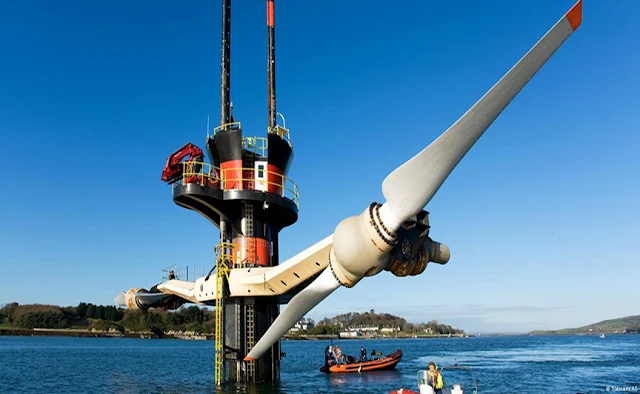What is Tidal Power
Tidal power is a form of renewable energy that harnesses the energy generated by the tides in the ocean. It is a type of hydropower that converts the energy of moving water into electricity.
Tidal power plants use turbines to capture the energy of the moving water as the tide comes in and goes out. As the tide rises and falls, water is forced through the turbines, which generate electricity.
Tidal power is considered a renewable source of energy because it relies on the natural cycles of the ocean, which are driven by the gravitational pull of the moon and the sun, and do not require the burning of fossil fuels
Countries in the world that take advantage of Tidal power
20 countries in the world that take advantage of tidal power, along with their installed capacity and notable projects:
| Country | Installed Capacity (MW) | Notable Projects |
|---|---|---|
| South Korea | 254 | Sihwa Lake Tidal Power Station, Uldolmok Tidal Power Plant |
| France | 240 | Rance Tidal Power Station, Fromveur Tidal Power Plant |
| Canada | 25 | Annapolis Royal Generating Station, Bay of Fundy |
| China | 20 | Jiangxia Tidal Power Station, Hengsha Tidal Power Station |
| United Kingdom | 12 | MeyGen Tidal Power Station, SeaGen Tidal Turbine |
| Russia | 1.2 | Kislaya Guba Tidal Power Station |
| Netherlands | 0.3 | Grevelingendam Tidal Power Station |
| India | 0.25 | Gulf of Kutch Tidal Power Project |
| Ireland | 0.25 | Westwave Project |
| Australia | 0.2 | Clarence Strait Tidal Energy Project |
| United States | 0.12 | Eastport Tidal Power Station, Verdant Power |
| Spain | 0.1 | Bimep Tidal Energy Project |
| South Africa | 0.1 | Saldanha Bay Tidal Energy Project |
| Chile | 0.04 | Pilque Tidal Power Plant |
| Brazil | 0.02 | Baía de Todos os Santos Tidal Power Plant |
| Norway | 0.01 | Kvalsundet Tidal Power Station |
| New Zealand | 0.01 | Admiralty Inlet Tidal Power Project |
| Taiwan | 0.01 | Penghu Tidal Power Station |
| Scotland | 0.007 | Nova Innovation Tidal Turbine |
| Faroe Islands | 0.002 | Tocardo Tidal Turbine |

